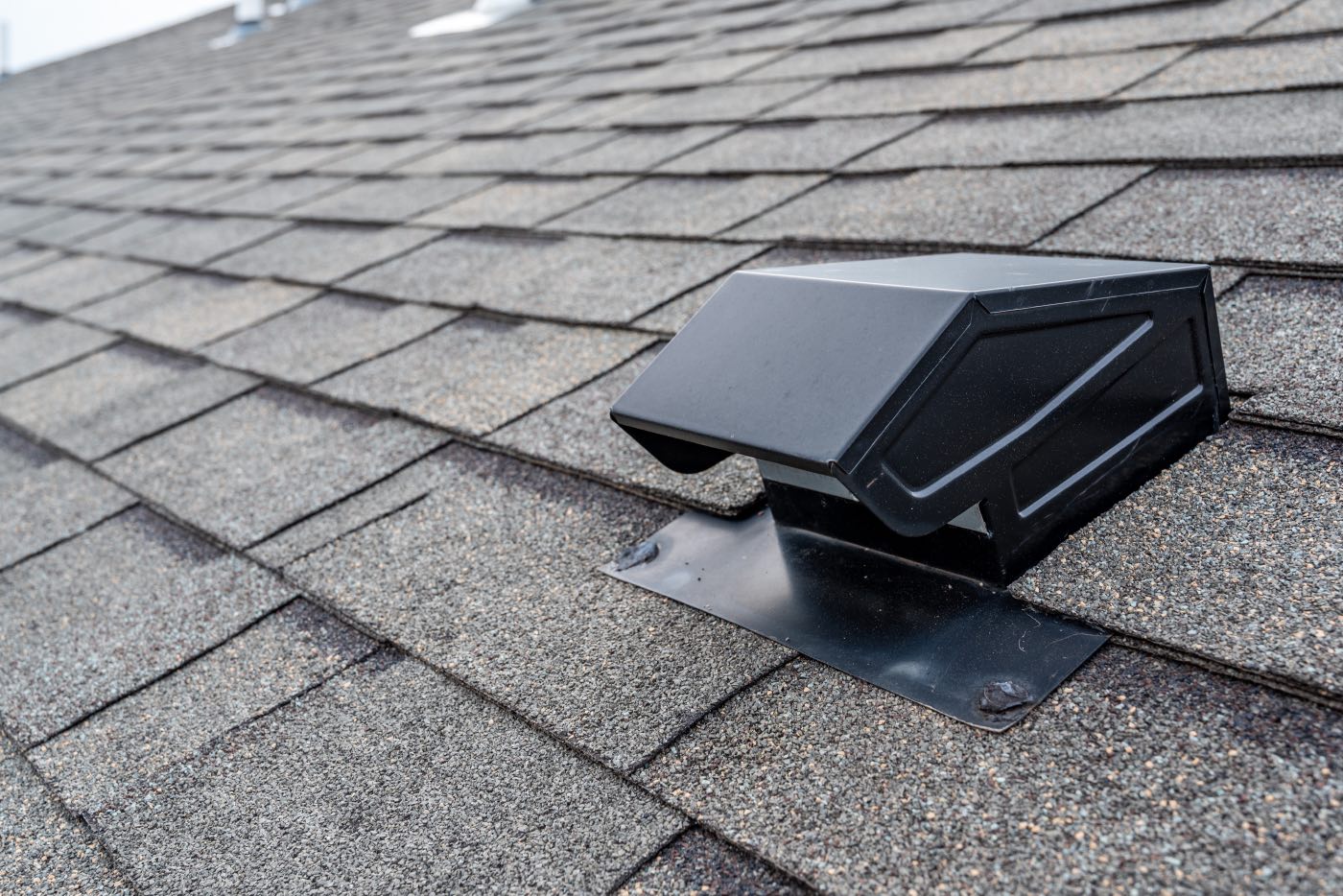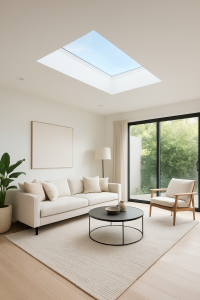As awareness grows about sustainable living and energy efficiency, cool roofs have emerged as a powerful tool in helping homeowners reduce their energy bills. But did you know that ventilation plays a major—and often underrated—role in the equation? It’s true: pairing a reflective roofing system with proper attic ventilation can significantly increase energy savings, bolster indoor comfort, and extend roof lifespan. Let’s explore how these two elements work together—and why smart homeowners call Weather Tight Roofing when they need professional help with roof repair or consultation.
What Is a “Cool Roof”?
A cool roof is designed to reflect more sunlight and absorb less heat than a standard roof. It achieves this through reflective coatings, materials, or finishes, often featuring:
-
High solar reflectance to bounce off more UV, visible, and infrared light
-
High thermal emittance to radiate absorbed heat back out
-
Reflective pigments and granules, light-colored membranes, or solar-reflective shingles
Reducing roof surface temperature—sometimes by 50–60°F compared to conventional roofs—lowers the amount of heat transferred into the attic and living spaces below. This leads to reduced demand on HVAC systems and lower cooling-related energy costs.
Why Ventilation Is More Than an Afterthought
A cool roof alone can deliver substantial savings—but without proper ventilation, it can’t reach its full potential. Here’s why ventilation matters:
-
Prevents Heat Buildup in the Attic
Even cool roofs absorb some heat. Without sufficient airflow to remove it, that heat accumulates in the attic, warming insulation and joists, and eventually infiltrating living spaces. -
Preserves Roof Health
For homes in cooler climates or during shoulder seasons, inadequate ventilation can trap moisture. This moisture can condense on the underside of roofing materials, leading to mold, rot, and early deterioration. -
Balances Indoor Temperature
Ventilation ensures that hot air entering the attic from the roof—or rising off the living area—is replaced with cooler outside air. This helps maintain more stable, energy-friendly indoor temperatures. -
Enhances Cool‑Roof Benefits
Airflow amplifies the cooling effect of reflectivity. Proper attic ventilation allows heat to escape efficiently, maximizing the roof’s energy-saving potential.
How Ventilation Works With Cool Roofing
1. Intake & Exhaust Ventilation: A Balanced System
Roof ventilation functions best when intake and exhaust vents form a balanced system:
-
Intake vents—usually installed at low points—bring in fresh air
-
Exhaust vents—positioned near roof ridges or high points—expel hot air
As warm air rises and exits through exhaust vents, cooler air enters through the intake. This continuous cycle prevents heat and moisture from lingering in the attic.
2. Sizing and Spacing Ventilation Properly
California building code requires at least 1 square foot of net free ventilation area (NFVA) for every 150 square feet of attic floor area (a 1:150 ratio). This ensures proper airflow and helps prevent moisture buildup and heat retention under the roof.
Vents should be evenly split between intake and exhaust (at or near the ridge) to maintain a balanced and efficient system.
The reduced 1:300 ratio (1 sq ft per 300 sq ft of attic) is only permitted in colder climate zones (6–8) when specific conditions are met—including a vapor retarder and precise vent placement—and does not apply in Riverside County (Zone 10).
Key design factors that influence ventilation needs include:
- Total attic floor area
- Roof pitch and shape
- Local climate conditions (Zone 10: warm, dry summers)
- Attic insulation levels (typically R-38 to R-60)
- Base code requirement: 1:150 NFVA.
- Reduced 1:300 allowance: only when attic is in Climate Zone 6, 7, or 8, and other conditions are met.
When Weathertight Roofing assesses or repairs a roof, they often check to ensure this balance is met—it means healthier roof performance and better long-term energy savings.
Quantifying the Savings: Cool Roof + Ventilation
Studies and real-world examples show that cool roofs combined with proper attic ventilation yield significant benefits:
-
Lower peak indoor temperatures
During summer, attic temperatures can exceed 150°F beneath dark roofs. Cool roofs can reduce surface temps by 40–60°F, and ventilation shaves even more heat off before it reaches living spaces. -
Energy bill reductions
The U.S. Department of Energy estimates that cool roofs can lower cooling energy use by 7–15%. With attic ventilation in place, the impact is compounded—especially in hot climates—leading to savings in the double digits for many homeowners. -
ROI grows over time
Initial investment in reflective roofing and ventilation pays off via lower utility bills and extended roof lifespan. Average payback periods range from 3 to 10 years, depending on factors like local energy costs and climate. -
Comfort gains
More consistent interior temperatures mean less reliance on HVAC systems—and reduced wear and tear. Plus, occupants enjoy a cooler, more comfortable home overall.
Installation & Retrofitting: What Homeowners Need to Know
Assessing Your Current Setup
A proper evaluation involves:
-
Inspecting attic insulation levels
-
Measuring cutting and ridge vent area
-
Estimating solar reflectivity of your existing roof
-
Identifying moisture, mold, or heat‑related damage
Weather Tight Roofing professionals often begin with a comprehensive roof and attic assessment. They’ll then provide recommendations ranging from simple venting additions to full roof replacement with cool roofing material.
Retrofitting Tips
-
Improve attic insulation (R‑38 to R‑60 depending on climate) so less heat transfers downward
-
Install ridge vent, dormer or turbine vent for natural heat exhaust—no electricity needed
-
Opt for solar-powered attic fans only where passive ventilation doesn’t meet design goals
-
Upgrade to reflective shingles, tiles, or membranes as part of a broader roof replacement plan
Choosing Professionals vs. DIY
-
Ventilation installation and attic sealing involve calculations and moisture management. Mistakes can worsen your energy costs—or even damage the roof system.
-
Professional roofers like Weather Tight Roofing review roof substrate, slope, and local climate to ensure proper vent selection and placement.
-
Need expert assistance? Don’t hesitate to explore their services—click here to connect with Weathertight Roofing’s roof repair team and get a professional assessment: roof repair services.
Climate Considerations: Tailoring the System
Hot, Humid Regions
-
Cool roofs excel in these zones, but moisture control is critical
-
Maintain a continuous and balanced ventilation system from eaves to ridge, ensuring intake and exhaust airflow are matched and supported by effective air sealing.
-
Ensure all ventilation openings are properly sized, placed, and unobstructed to minimize moisture intrusion into the attic.
Hot, Dry Regions
-
Cool roofs yield massive savings in A/C energy
-
Attic moisture is less of a concern
-
Ridge venting and static roof vents are effective solutions for passive attic ventilation.
Mixed or Cool Regions
-
In cooler months, you don’t want attic to be too cold—ventilation should prevent moisture, not over cool
-
Intake/exhaust areas may be reduced, or equipped with automatic vent covers
-
Cool roofing still helps: rebounds heat in spring/fall, extends roof life
Other Benefits Beyond Energy Savings
Extended Roof Lifespan
Cool roofs and proper ventilation reduce thermal cycling stresses and moisture damage, which translates to fewer premature shingles or panel failures.
Environmental Impact
-
Lower electricity demand cuts greenhouse gas emissions at both the home and grid scale
-
Cool roofs can help mitigate the urban heat island effect, improving neighborhood-level comfort
-
Energy efficiency savings align with sustainability goals—especially when combined with attic insulation and smart HVAC use
Insurance & Incentives
-
Certain insurance companies offer premium discounts for impact-resistant or energy-efficient roofs
-
Some local utilities, governments, or state programs provide rebates or tax credits for cool roof installations—ask your roofer or check local utility websites
Takeaway: The Perfect Pairing
A cool roof without proper ventilation is like a sports car without a steering wheel—it might look efficient on paper, but in practice, you struggle to reach full performance. Pairing solar-reflective materials with balanced, well-designed attic ventilation ensures you get:
-
Maximum energy savings year-round
-
Comfortable living spaces free of heat and moisture issues
-
Enhanced roof longevity and less risk of mold or rot
-
A solid investment with long-term returns
When it’s time to explore options or solve roof-related issues, a professional evaluation is key. Reach out to Weather Tight Roofing’s experts for a full roof repair and ventilation audit: roof repair services.
By taking a holistic approach—leveraging both surface reflection and in‑attic airflow—you’re actively investing in ongoing energy savings, healthier indoor air quality, and sustainable home performance. If you’re considering a cool roof, don’t overlook the attic below—it’s the secret that ensures the smart roof you choose lives up to its expectations.
Quick Checklist
| Task | What to Do |
|---|---|
| Inspect | Check attic insulation & roof reflectivity |
| Vent Assessment | Measure intake vs. exhaust; aim for ~50/50 balance |
| Material Selection | Choose cool shingles, metal, tiles, or membrane |
| Retrofit | ADD SHINGLE OVER INTAKE VENT/STATIC VENTS/RIDGE VENTS |
| Professional Help | Contact a reputable roofer for evaluation and installation |
Summary: A truly “cool” roof isn’t just about reflectivity—it’s about creating a complete system that manages heat, moisture, and airflow from the rooftop to the attic floor. Invest in both reflective roofing and proper ventilation, and you’ll enjoy lower bills, greater comfort, and a roof that lasts decades.
If you’re ready to get started or want expert input, don’t hesitate to contact Weather Tight Roofing for a thorough roof repair and ventilation assessment.







